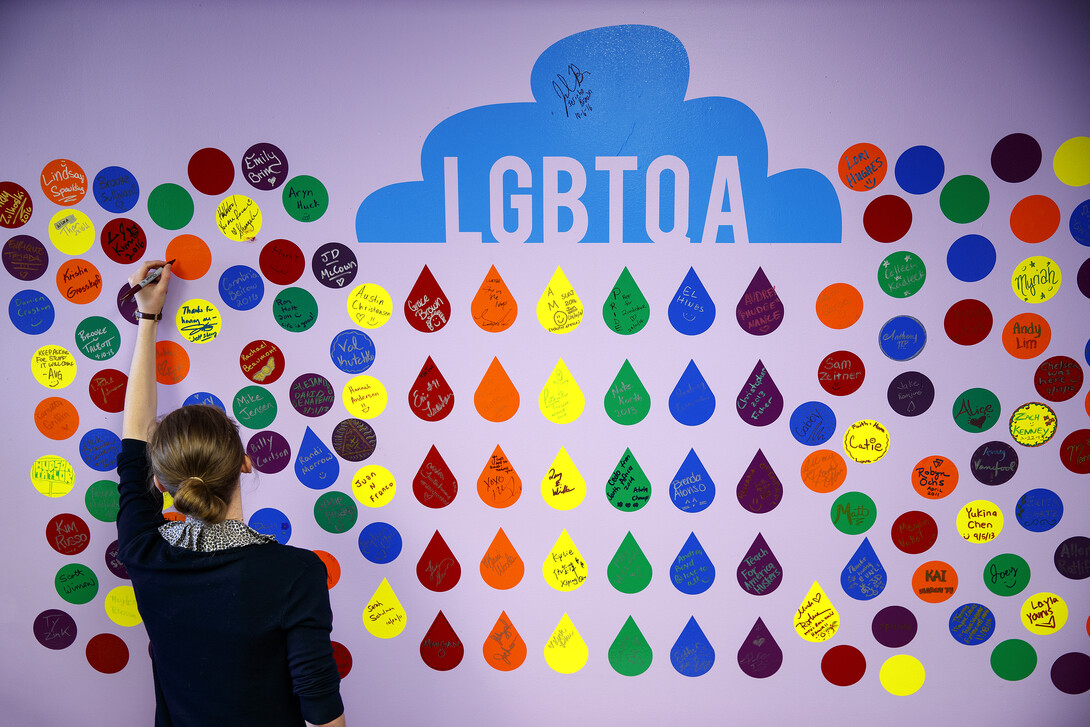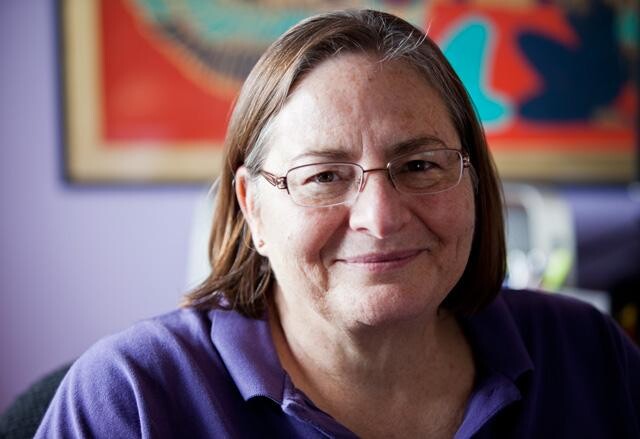
In contrast to the rollicking Pride Month celebrations across the globe in June, the LGBTQA+ Resource Center at the University of Nebraska-Lincoln is quieter in the summer term – with fewer students around – but no less active advocating change to make the campus a safer, more inclusive place.
Since the LGBTQA+ Resource Center’s founding in 2007, students, faculty and staff affiliated with the center have helped bring a number of positive developments to Lincoln’s campuses, throughout the University of Nebraska system and in Nebraska communities.

The center and supportive students, including ASUN and RHA, also advocated for several years to have gender-inclusive housing on campus, which University Housing began offering in fall 2015.
In fall 2018, students were welcomed to the Rainbow Ball, a new event similar to a prom, championed by Jake Piccini, the Peer Mentor Program coordinator at the center and president of Spectrum.
“The students really wanted to have an event like that because most LGBT students were unable to go to one where they could actually take a date and be themselves,” Tetreault said. “The first one went really well, so they’re planning it again for Homecoming Week.”
Pioneering change
The university has a long history of various individuals and groups working toward equality and inclusiveness for gay, lesbian, bisexual and transgender students. In 1970, Nebraska became only the second institution in the United States to offer a course on gay studies, “Pro-Seminar in Homophile Studies.” The class was led by Louis Crompton, a professor of English at Nebraska, who was a pioneer in queer studies and a well-known LGBT advocate until his death in 2009.
The first documented student organization for gay and lesbian students, the University of Nebraska Gay Action Group, was formally recognized in 1971. The group met at the United Ministries in Higher Education, the only place that would allow them to meet. In fall 1986, the Gay/Lesbian Resource Center was recognized as a student organization and given space on the third floor of Nebraska Union. The group evolved to become what is known as Spectrum today.
In 1995, Tetreault – then the sexual education coordinator for the University Health Center – introduced Ally cards to campus, and a graduate assistant position was funded for the first time to work with LGBT students on campus. That position was expanded in 2003 as a part-time assistant director for GLBTA Programs and Services in the Office of Student Services.
Then, in 2006, Tetreault stepped into the role, and it became a full-time position in 2007, along with the opening of the new, staffed center.
Each year, the LGBTQA+ Resource Center honors Crompton and his partner, Luis Diaz-Perdomo, during its Lavender Graduation ceremony by bestowing a named scholarship to a student working toward “a more just, inclusive society for the LGBTQ community.”
Looking forward
The center works with five student organizations, but Tetreault said its programming across campus brings education and resources to more than 17,000 students, faculty and staff each year.
In the fall, The Change, a student organization under the center’s umbrella, will open the Lavender Closet, to offer donated gender-affirming clothing for free. The center also plans to tackle tough questions by leaning into queerness, spirituality and the intersection of the two.
“We’ve had programming around this before, but we’re planning on expanding it,” Tetreault said. “There are so many people who’ve been wounded by faith communities, and religion has been used as a weapon. There are also a lot of LGBTQA+ people who are people of faith (and) who belong to churches that are not affirming, but those are their communities. There are also a growing number of faith communities that are welcoming and affirming of people of all gender and sexual identities. Those faith communities have helped build bridges at the intersections of these identities and those who love and support us.”
“Being able to address those issues and being able to give people the tools to have conversations around it is really important.”
Currently, Tetreault and her research team are in the midst of going through the latest survey data from students, looking at how the campus climate has changed for LGBTQA+ students. A survey was taken in 2009 and was repeated in 2017.
“We’re still working with the data, but what we do know is that the campus climate has improved. We also know there are still some problem areas,” Tetreault said. “Change takes a long time. We have created change, and in some ways, I would say the university is probably the most progressive institution in the state, but our wheels still turn slowly.”
“I actually saw on Twitter a couple years ago… a student saying, ‘If you’re trans, this is a great place to come,’ and I think it is, because for many of our students, this has been the most accepting environment they’ve been in.”







